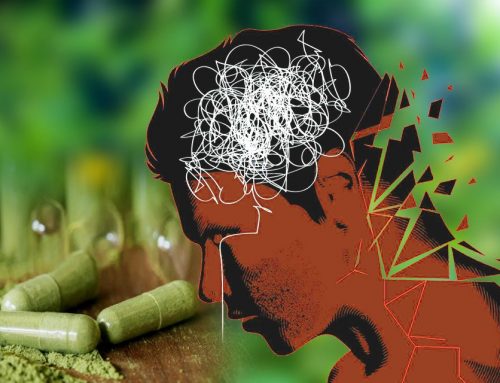Cocaine is a dangerous drug that produces intense feelings of euphoria, joy, and endurance. It has gained infamy over the years because of its association with popular culture and actress misuse. Keep reading to discover some unlikely medical history and learn more about the dangerous effects of cocaine.
What is Cocaine?
Cocaine (benzoylmethylecgonine) is a well-known illegal stimulant widely used all over the world.
Due to its exceptionally dangerous, addictive nature and illegal status, we strongly recommend against using cocaine at any quantity and for any reason. This post was written for informational purposes only.

The Origins
Cocaine comes from the leaves of the coca plant (Erythroxylon coca).
Regardless of its current notoriety, cocaine has a documented history of use by the Amara Indians of Peru. This tribe has made use of cocaine for thousands of years by chewing the leaves of the coca plant.
This kind of usage has fewer adverse effects, presumably because of the very low concentration of the active component in the leaves and the laborious action of extracting cocaine by chewing the leaves.
Modern Use and Abuse
But, everything changed in 1859 when German chemist Albert Niemann purified cocaine.
Around the end of 1884, cocaine started gaining publicity and scientific interest. Sigmund Freud commended the medication in his renowned Cocaine Papers describing its therapeutic properties in relieving depression and anxiety.
Following Freud’s books, Carl Koller discovered that the anesthetic properties of cocaine on the human eye. Purified cocaine became commercially accessible if Merck started refining and producing it.
Without regulatory restrictions, cocaine was originally sold as a therapeutic and consumable item. However, the Harrison Narcotics Act of 1914 from the US prohibited the supply of cocaine as a result of the widespread misuse and dependence.
Despite regulatory restrictions, the drug is still sold and used thickly around the world. According to a United Nations report, around 18.3 million people used cocaine in 2014.
Pure cocaine is a white crystal powder that may be snorted, smoked, or injected. It is called”crack” when smoked (freebase form); road names contain coke, flake, snow, and powder.
How It Works
Cocaine is highly addictive and produces a sense of euphoria by causing a buildup of dopamine in the brain’s pleasure center (the limbic system).
Independent Of the course of administration, cocaine is quickly absorbed into the bloodstream and reaches the brain to initiate its psychostimulant effects.
Once in the brain, cocaine blocks the reuptake of the neurotransmitters dopamine, noradrenaline, dopamine, and acetylcholine by presynaptic neurons, which fosters their impacts.
More specifically, cocaine blocks the dopamine transporter SLC6A3, which causes a buildup of dopamine and also an overactivation of dopamine neurons.
Dopamine Reinforces the addictive behaviors in the limbic”pleasure” or”reward” center of the brain (mesolimbic and mesocortical dopaminergic systems).
Psychoactive changes caused by high dopamine may lead to uncontrolled writhing movements, called”crack dancing”.
The sustained impacts of the leftover neurotransmitters can lead to the narrowing of blood vessels, leading to heart problems.
Cocaine is a stimulant that works by increasing the levels of serotonin, dopamine, and noradrenaline. This can lead to a number of side effects and lead to dependence.
Short-Term Effects Of Cocaine
Cocaine’s appealing short-term psychoactive effects (intense high) comprise:
- Euphoria
- Increased energy, alertness, or sociability
- Inflated self-esteem
- Reduced fatigue
5 Side Effects & Dangers Of Cocaine
Cocaine Is a powerful drug that has both short and long-term consequences. Studies of both humans and animals have demonstrated that cocaine use can harm the heart, brain, liver, kidneys, bowel, and blood vessels.
Furthermore, if snorted, cocaine may damage nostrils cells and if smoked, the lungs.
Mechanism of Damage
Cocaine Increases addictive behavior by impairing dopamine transmission in the brain (nucleus accumbens and dorsal striatum), generating cravings in addicts.
Mitochondria Are the energy generators of the cell. As shown by cell-based studies, cocaine can accumulate within the cell and damage the functional and structural integrity of mitochondria, interrupting cellular energy production and leading to cell death.
Animal studies further showed that cocaine can create oxidative stress in cells and alter mitochondrial DNA.
At the center, this oxidative stress contributes to toxicity and cell death, as detected in human cocaine overdose.
Cocaine causes dependence and side effects by impairing dopamine signaling in the brain. It also damages mitochondria and increases oxidative stress.
1) Psychological Disorders
Cocaine Can significantly impact the user’s mood and psychological state. Cocaine users have reported a wide range of negative psychological effects including stress, melancholy, mood swings, paranoia, and panic attacks.
Chronic cocaine use can cause symptoms of delirium and aggression.
Observational studies have shown that cocaine users are more likely to develop depression and psychosis.
Although uncommon, higher doses may lead to hallucinations or false sensory sensations.
Abstinence from cocaine usage can cause withdrawal symptoms like mood cravings and disturbances.
Cocaine can lead to a range of psychological disorders like depression, anxiety, paranoia, and aggression. Abstinence leads to mood disturbance and cravings.
2) Sleep Disorders
Cocaine can impair wakefulness and sleep cycles because of chemical changes in the brain.
In animal research, cocaine interrupted ordinary sleep patterns.
More Specifically, cocaine may lead to a reduction in REM (rapid eye movement) sleep, which has been related to depression.
Cocaine Use impairs the normal sleep cycle, while dependency causes deep sleep problems. Abstinence will produce insomnia and decreased sleep from cocaine addicts.
Thus, sleep disturbances and insomnia can lead to depression and even result in suicide.
Cocaine use can cause sleep disorders, therefore increasing the risk of depression and suicidal thoughts.
3) Cognitive Impairment
Long-term cocaine use can negatively impact cognitive functions. A preliminary study demonstrated brain impairment from 20 heavy cocaine and.
Cocaine users have decreased short-term memory, focus, and concept formation when compared with non-users.
Magnetic resonance imaging (MRI) studies have shown that cocaine reduces the activity in several areas of the mind.
It Reduced memory and learning performance, and these effects lasted for up to 4 months of abstinence in 56 chronic cocaine users.
Long-term use of cocaine injuries the brain and impairs memory, attention, and cognitive skills.
4) Allergic Panic
Smoking “crack” (freebase cocaine) may lead to pulmonary complications such as asthma, accidents, difficulty breathing, wheezing, inflammation, and bleeding of the lungs.
The acute respiratory symptoms of smoking cocaine include coughing with sputum, chest pain, shortness of breath, coughing of blood (hemoptysis), and worsening of asthmatic symptoms.
Lengthy exposure to cocaine can lead to obstructive pulmonary disease and fever. Other reports suggest that inhalation of (freebase) cocaine could directly damage the pulmonary gas exchange surface.
Smoking “crack” cocaine can result in several respiratory problems, including asthma, lung injuries, shortness of breath, chest pain, and bleeding.
5) Heart Infection
Cocaine causes short-term physiological effects like increased blood pressure, constricted blood vessels, also enhanced heart rate. By increasing heart rate and blood pressure, cocaine increases the heart’s oxygen demand.
A mixture of these effects can harm the arteries.
Cocaine Use is also associated with hypertension, irregular heart rates, reduced blood flow to the heart, heart attacks, and sudden heart death. The risk of a serious heart attack is increased 24 days after cocaine usage in comparatively low-risk individuals.
An Autopsy conducted on 40 subjects who were positive for cocaine revealed that cocaine use contributes to inflammation and damage to the heart muscle.
Cocaine use increases the chance of cardiovascular disease by impairing blood pressure, heart rate, and heart blood flow. Additionally, it increases inflammation and damages the center.
Signs of Cocaine Use
Warning signs of chronic cocaine use include:
- Redness or inflammation of the eyes
- Dilated pupils
- Bleeding or tingling nose with swollen, inflamed mucosa
- Difficulties sitting or standing
- Behavioral effects such as copying and ritualistic behaviors
- Emotional changes
- Incoherent speech
Overdose Symptoms
Consumption of high doses of cocaine may lead to overdose or poisoning. The symptoms of cocaine overdose include:
- Psychosis, agitation, or delirium
- Seizures or stroke
- Convulsions
- Heart problems (irregular heart rate and increased blood pressure)
- Respiratory problems
- High body temperature
If You suspect that you or someone you know has overdosed on cocaine, call 911 (or the neighborhood emergency helpline) and seek medical attention immediately.
Harm Reduction?
The depletion of dopamine in cocaine users contributes to depression, diminished cognitive function, and tiredness. Administration of L-tyrosine may be used to improve dopamine levels in the brains of people in cocaine withdrawal (L-tyrosine>Dopa>Dopamine).
Tyrosine can come from nutritional supplements or food resources such as chicken, turkey, soy products, or fish.
However, Increasing tyrosine may potentially mitigate just a fraction of cocaine adverse effects, and it doesn’t make cocaine use some safer.
Many men and women require medical oversight to effectively overcome alcoholism addiction.
Cocaine overdose is a hazardous, potentially life-threatening condition. L-tyrosine may mitigate a fraction of cocaine side effects, but it does not make it any safer.
Treatment Of Addiction: Cognitive-Behavioral Approach
There Are many different approaches or treatments for cocaine dependence. 1 approach is by way of cognitive-behavioral therapy (CBT). CBT utilizes several important tasks to combat cocaine addiction, such as:
- Maintaining motivation to abstain from drug use by emphasizing the gains/losses through medication use
- Teaching effective coping skills
- Identifying and reducing habits linked with drug use
- Fostering management and tolerance of withdrawal effects like depression or anger
- Building and using effective social aid and environment to lower the dangers of dependence
Cognitive-behavioral therapy can reduce cocaine dependence by helping individuals gain motivation, coping skills, social support, and healthy habits.
Medical Uses Of Cocaine
Cocaine Itself is no more used by medical professionals, and coca leaves are prohibited in many countries unless they’re decocainized first. We therefore strongly advocate against
That said, cocaine does have a history of medical use, and decocainized coca leaves might have some benefits.
Coca Leaves
Apart from cocaine, coca leaves comprise essential nutrients such as vitamins and minerals and have lots of health benefits.
Chewing coca leaves might help with digestive problems, stress, appetite, and altitude sickness through brain stimulation and mood-elevating properties.
Coca leaves also increases the body’s blood sugar level over fasting amounts, which can reduce the feeling of hunger.
However, refined cocaine is a very strong stimulant that has a restricted number of health advantages. These health benefits do NOT counteract the addictiveness and side effects of cocaine.
Coca leaves contain essential nutrients and also a bit of cocaine; they can combat indigestion and enhance mood. This will not go for highly addictive pure cocaine.
Topical Anesthesia
Cocaine has numbing properties, also it was originally used in medicine as an anesthetic for surgical practices.
When combined with other compounds (tetracaine and adrenaline), it has been used as a topical anesthetic for small facial and scalp lacerations.
Takeaway
Pure Cocaine gained popularity in the late 19th century, but it was soon banned. Millions of people still use it around the world. Cocaine produces short-term euphoria and alertness by increasing the levels of serotonin, dopamine, and noradrenaline.
Long-term use Causes dependence and an array of psychological disorders, sleep disturbances, cognitive problems, and heart problems. Cocaine Overdose can cause acute, life-threatening harm to the center and brain. Cognitive-behavioral treatment can help cocaine addicts construct Healthy habits and coping skills in a supportive, safe environment.



